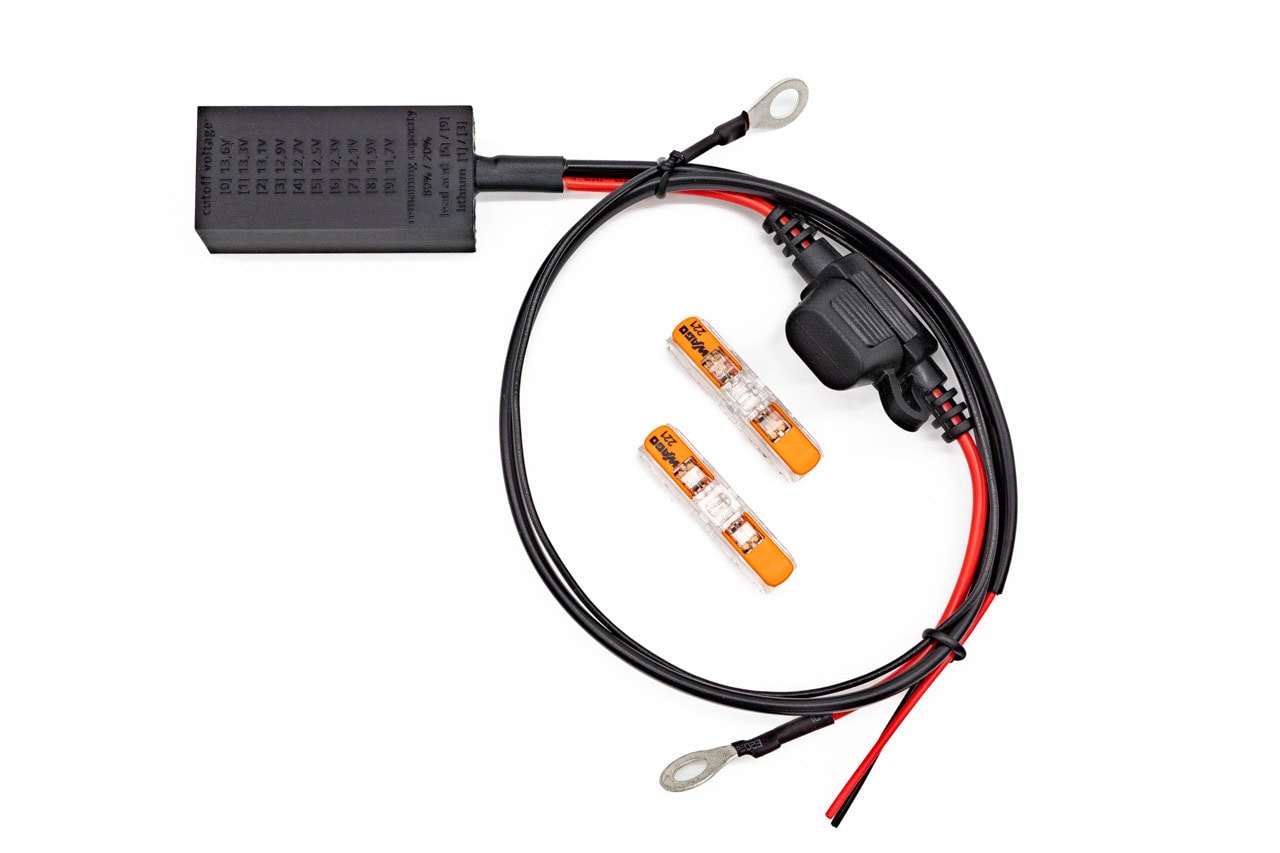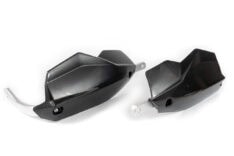12V Battery Guard – Intelligent Deep Discharge Protection for Your Vehicle Battery
Never again starting problems due to discharged batteries! The Battery Guard reliably protects your 12V battery from harmful deep discharge. Whether motorcycle, car, quad, or motorhome – connected devices such as navigation systems, phone chargers, or onboard sockets draw power even when the vehicle is at rest. The Battery Guard automatically interrupts the power supply as soon as the voltage falls below the set value. This ensures that there is always enough energy for the next engine start.
The control unit of the Battery Guard is connected directly to the battery terminals, while the electrical consumers are connected to the Battery Guard. The control unit features an adjustable ten-stage switch: each stage corresponds to a voltage value. The level set by the rider defines the remaining battery capacity at which the Battery Guard disconnects the power supply to the connected device. This ensures that sufficient capacity is always available to start the vehicle.
With 10 selectable switching stages, overvoltage protection, an extremely low self-consumption of only 0.3 mA, and a waterproof IP67 housing, the Battery Guard is ready for any application – whether daily use or adventure. The compact device can be easily stowed under the seat or in the engine compartment.
Key Advantages
- + Reliable protection against deep discharge & starting problems
- + Suitable for lead-acid & lithium-ion batteries
- + 10 switching stages for individual adjustment
- + Integrated overvoltage protection up to 16 V
- + Extremely low self-consumption (0.3 mA) – suitable for continuous operation
- + Compact, waterproof IP67 housing
Details
With 120 watts, the Battery Guard provides sufficient power for all common chargers, navigation devices, additional instruments, lighting, or portable refrigerators. The integrated fuse prevents possible overload. A built-in overvoltage protection ensures safe operation of all connected devices.
- The self-consumption (0.3 mA) is so low that the device can remain permanently connected to the vehicle. With an average motorcycle battery of 10Ah, it would take 18 months to reach a residual capacity of 50%.
- The 10 switching stages correspond to the following cutoff voltages:
| [0] | 13.6V |
| [1] | 13.3V |
| [2] | 13.1V |
| [3] | 12.9V |
| [4] | 12.7V |
| [5] | 12.5V |
| [6] | 12.3V |
| [7] | 12.1V |
| [8] | 11.9V |
| [9] | 11.7V |
-
The reconnect voltage is 0.3V above the selected cutoff voltage.
- For a remaining battery capacity of 80% / 20%, the following stages must be set:
- Lead-acid battery: [5] / [9]
- Lithium-ion battery: [1] / [3]
- The Battery Guard can also be operated in reverse, e.g., in combination with a battery charger. In this case, however, no voltage cutoff takes place.
Technical Data
| Operating voltage: | 9–15 volts |
| Max. consumer current: | 10 A |
| Self-consumption: | 0.3 mA |
| Undervoltage cutoff: | 13.6V to 11.7V |
| Reconnect voltage: | cutoff + 0.3V |
| Overvoltage cutoff: | 16V |
| Housing dimensions (W/H/D): | 23 × 16 × 49 mm |
| Weight: | 0.08 kg |
| Protection class: | IP67 |
Compatibility
- ✓ Compatible with all 12V onboard systems of motorcycles, cars, quads, motorhomes, etc.
- ✓ Compatible with lead-acid and lithium-ion batteries
Scope of Delivery
- Battery Guard including connection cable and fuse
- 2x WAGO connector for connecting electrical consumers








Reviews
There are no reviews yet.